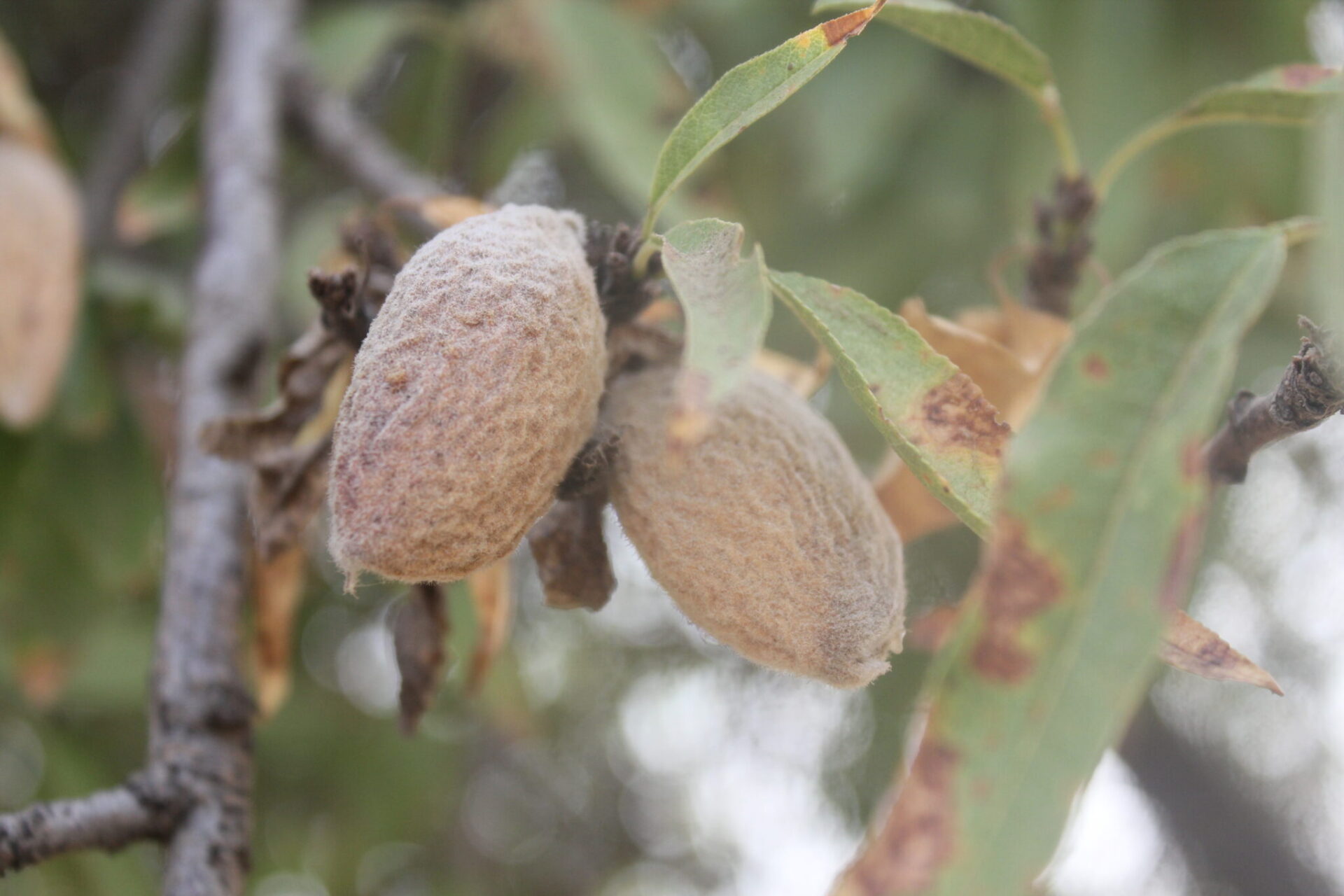Mummy nuts or stick-tights? Either way, the almonds do not come off the tree when it is shaken.
For almond growers, the answer to poor nut removal could be as easy as a late maturing nut or it can be an issue with irrigation or a hull rot infection.
Mummy nuts, said UCCE area orchard systems advisor Mohammad Yaghmour, are just nuts or fruits that were not shaken loose from the tree during harvest or left on the orchard ground after harvest, these fruits have shriveled and dried on the tree or the ground. Mummies on the tree can be shaken in an orchard during sanitation process. Stick-tights are also almond fruits that remain on the tree after shaking the tree and can be a symptom of an infection or tree stress due to inadequate irrigation.
Another less common reason for an orchard to have a high number of stick-tight nuts is boron toxicity. Affected trees may have gum formation at the spur, causing the nut to stick. Yaghmour said high levels of boron in the soil or irrigation water can adversely affect trees health resulting in tree decline. Laboratory analysis of almond hulls at harvest time can reveal if boron toxicity is the cause of stick-tight nuts.
Stick-tight almonds can also happen when severe deficit irrigation is applied in between hull split and harvest. Yaghmour said using a pressure chamber to determine stress levels could help with irrigation management and reduce the incidence of high stress. Recommendation if using regulated deficit irrigation is to keep tree stress levels between -14 to -18 bars during the application of the moderate stress.
When an almond hull is infected by a hull rot pathogen, a toxin is secreted which leads to the death of fruitwood. As this toxin kills tissues, it can cause them to gum, especially at the peduncle, effectively gluing the nuts to the spur.
Nuts infected with Rhizopus stolinifer or Monilinia fructicola pathogens are more difficult to remove. The pathogens also release toxins that move into the fruiting wood, affecting future crop yields. Environmental conditions such as humidity at onset of hull split, over-irrigation or fertilization can result in hull rot infections.
No matter what the reason for an abundance of nuts left behind at harvest, research by Almond Board has shown the presence of nuts left on the tree or on the orchard floor can provide overwintering sites for navel orange worm.
A fall or winter shake to put all mummies on the ground where they can be destroyed by flail mowing is a large part of NOW control. The goal is to have fewer than two mummies per tree by bud swell in February. In the southern growing areas, moving closer to one or no mummies per tree is advised where NOW populations are difficult to control.












